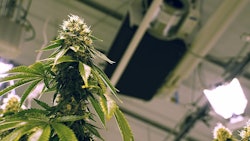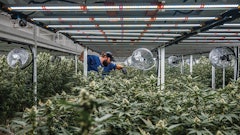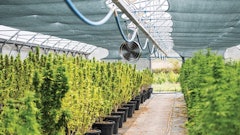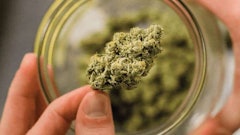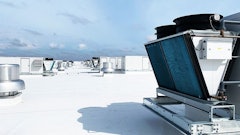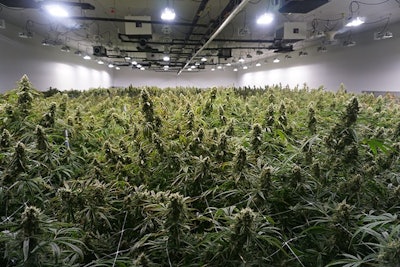
Monitoring data points in a cannabis cultivation facility—and then controlling those data points either manually or through an automated system—are the core principles of environmental control in an indoor grow.
“Monitoring and control impact our crops’ performance in many ways,” says Andrew Lange, chief technical officer of Agrios Global Holdings, an agriculture technology and services company based in Canada. “Due to the amount of control we have in our facilities, we are able to maintain extremely controlled cultivation environments, which lend to more consistent, higher-quality products. Eliminating environmental variables is one of the most important things you can do in your cultivation facility. Monitoring and controls help with that, but to do it efficiently requires high resolution and frequent readings from your monitoring system.”
Monitoring systems are the backbone of data tracking and collection, Lange says. The more a cultivator monitors, the more data he or she has to review to find correlations in environmental variables as the plants grow.
“Every time you [review the data], you learn a little bit more, and then you’re able to … know your grow and how to fine-tune your system,” says David Bernard-Perron, VP of growing operations for The Green Organic Dutchman, a licensed producer in Canada.
“More data allows us to make decisions affecting the plants quicker and with more insight and accuracy,” Lange adds. “Not all data is useful, though, and the key is learning what is relevant and what isn’t.”
While there are many areas of the cultivation facility that can be monitored, Lange suggests that cultivators monitor the following in their grow rooms:
- Temperature
- Relative humidity
- CO2 concentration
- Light and intensity
- Vapor pressure deficit (VPD)
- Soil moisture
Cultivators should only monitor the variables they want to ultimately control to optimize the grow, adds David Holmes, founder and CEO of Clade9, a full-service cannabis-cultivation business that manages grows in Arizona and Las Vegas, and its own cultivation facility in California.
“The reason we monitor variables is to allow us to make decisions on changing parameters to improve crop performance,” he says. “Typically, we monitor and collect data, then we analyze and make changes to our control system based on our results. The benefits can be vast, from improved yields, quality and consistency to labor reduction and strain selection.”
While growers can control any of the data points they monitor, Lange says temperature, relative humidity, CO2 concentration and on/off light sensors are the most critical. Holmes recommends controlling light intensity and irrigation, as well.
An on/off control is the most basic control system type. If a room’s target temperature is 72 degrees Fahrenheit (F), for example, but the monitoring system detects a temperature of 74 degrees F, the on/off control system determines that the target is above the set point and turns the air conditioning system on to cool the room until the monitoring equipment reads 72 degrees F, and then the control system turns the AC off. While on/off controls are cheaper than a predictive system, they are not as energy efficient and they don’t offer the same level of control, Lange says.
Predictive and variable controls control the equipment on a scale of 0-100; if the room only needs 25-percent of the total available cooling capacity, for example, the control system can run the mechanical equipment at 25 percent, Lange says.
“This is much more efficient than the on/off option and it provides more stable environments,” Lange says. “There are no large spikes—just a smoother, more consistent temperature.”
Controlling a cultivation facility can be manual or automated.
“With automated controls throughout your facility, you can use data monitoring to inform the precise range of values to trigger your equipment and processes to optimize production,” says Holmes.
Automating variables will reduce human error and labor while increasing the precision of the variables being controlled, Holmes adds. “This precision can increase yields, uniformity and quality.”
Cultivators must perform a cost analysis to evaluate whether automation makes sense for their operations, Bernard-Perron says. “It’s all about keeping in mind your margin as the space is getting more and more competitive. There are some tools that are very nice, neat and sexy, but will you be able to monetize that? You need to do some cost analysis and workflow analysis to make sure that you’re implementing the proper solution in terms of monitoring, control and automation that’s going to be able to really optimize your production, flow and crop quality or ease your workflow because sometimes labor is an issue.”
Lange suggests that cultivators automate as much as they can within their budgets and cautions them to take the time to properly integrate them into their operations.
“Even if you buy off-the-shelf automated solutions such as trimmers and packaging equipment, expect to spend a significant amount of time dialing these pieces of equipment in so they work just right,” he says.







